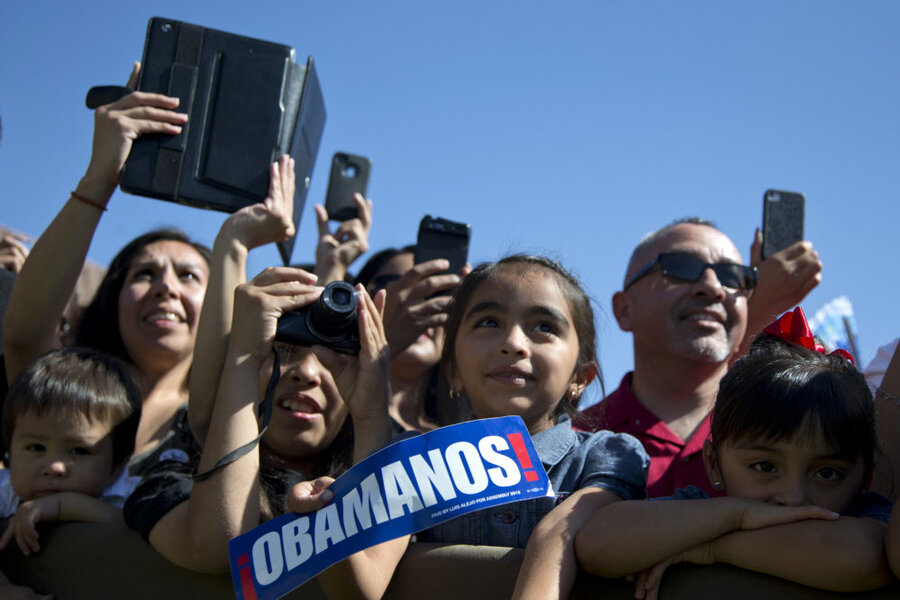In dedicating César Chávez monument, Obama reaches out to Latino voters
Loading...
While Mitt Romney touted his foreign policy agenda in Virginia on Columbus Day, President Obama courted a key demographic in California: Hispanic voters.
Mr. Obama designated the César E. Chávez National Monument in Keene, Calif., honoring the labor leader and reaching out to Latinos and union workers at the same time.
He toured the site at Nuestra Señora Reina de la Paz, where Mr. Chávez lived and where he helped the United Farm Workers union strategize for better pay and working conditions.
In his remarks, Obama evoked recent history, when no one seemed to care about the plight of America's farm workers.
"César cared," the president said. "In his own peaceful and eloquent way, he made other people care, too."
The site includes Chávez's grave, his office, and the small home where his widow still lives.
The decision to designate a monument here is historic – it will be the first parcel in the National Park Service system honoring a modern-day Latino – but it also clearly has political motivations.
Currently, polls show that Obama has the support of about 70 percent of Latino voters – a wide lead that could help propel him to victory. Hispanics are a growing demographic that both Obama and Mr. Romney have eagerly sought. But while the numbers for Obama are encouraging, it's unclear how enthusiastically many of those voters support him or whether they'll get to the polls on Election Day.
Already, in a move his opponents have criticized as politically motivated, Obama has gained some support from Latino voters with his decision to allow work permits to some young undocumented immigrants brought to the US as children, via the Deferred Action for Childhood Arrivals (DACA) program – a program similar to the DREAM Act.
Given that focus on immigration – and the importance of immigration reform to many Hispanic voters – it's notable what a controversial figure Chávez was, even among Latinos.
As co-founder of the National Farm Workers Association (which later became the UFW), he was a tireless advocate for laborers' rights and helped make the plight of thousands of fieldworkers a moral cause. He also coined the famous phrase "Si, se puede" – the Spanish phrase that was reflected in Obama's "Yes we can" slogan in 2008.
But Chávez was not a fan of expanding immigration. He believed that undocumented immigrants undercut the pay and negotiating power of unionized workers, and he protested farms' use of migrant and undocumented workers as "strikebreakers."
In some instances, he and the UFW even reported some undocumented immigrants to the Immigration and Naturalization Service for deportation.
In the 1970s, under Chávez, the UFW set up a "wet line" along the US-Mexico border to stop immigrants from entering the US illegally.
Almost certainly, it was the pro-worker, civil rights activist Chávez, and not the anti-immigrant Chávez, that Obama sought to honor in dedicating the monument on Monday.
Chávez, he noted in his remarks, believed "when someone who works 12 hours a day in the fields can earn enough to put food on the table – maybe save up enough to buy a home – that lifts up our entire economy."








